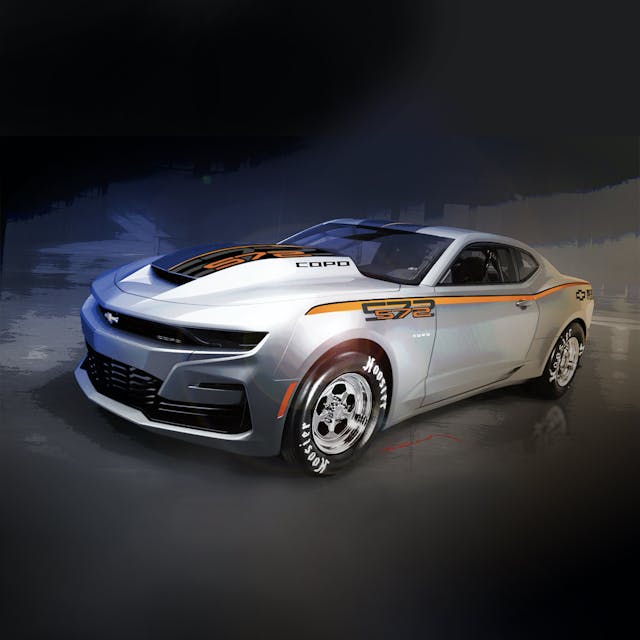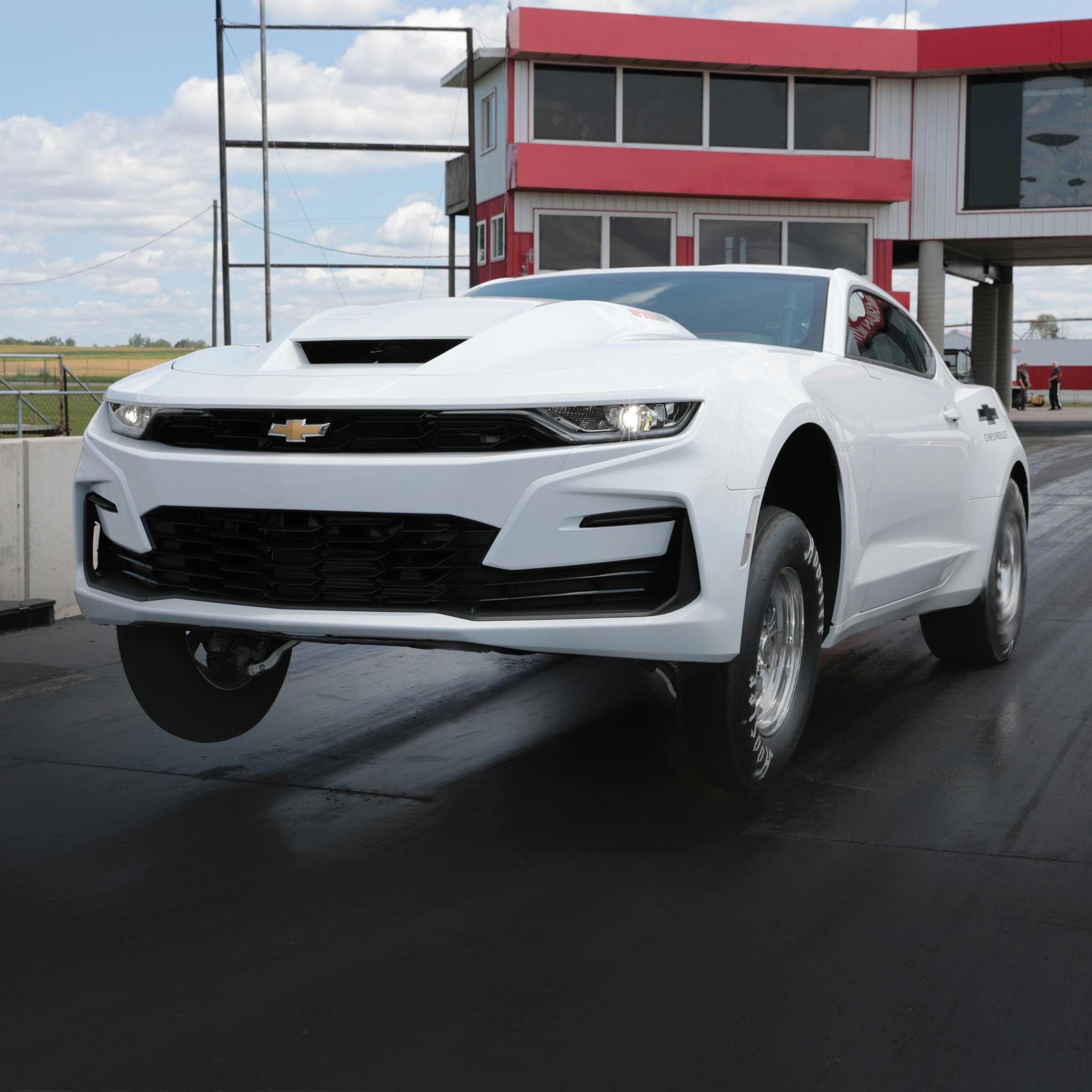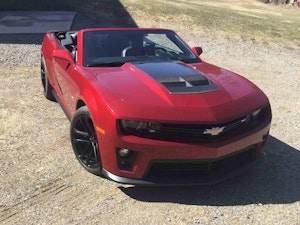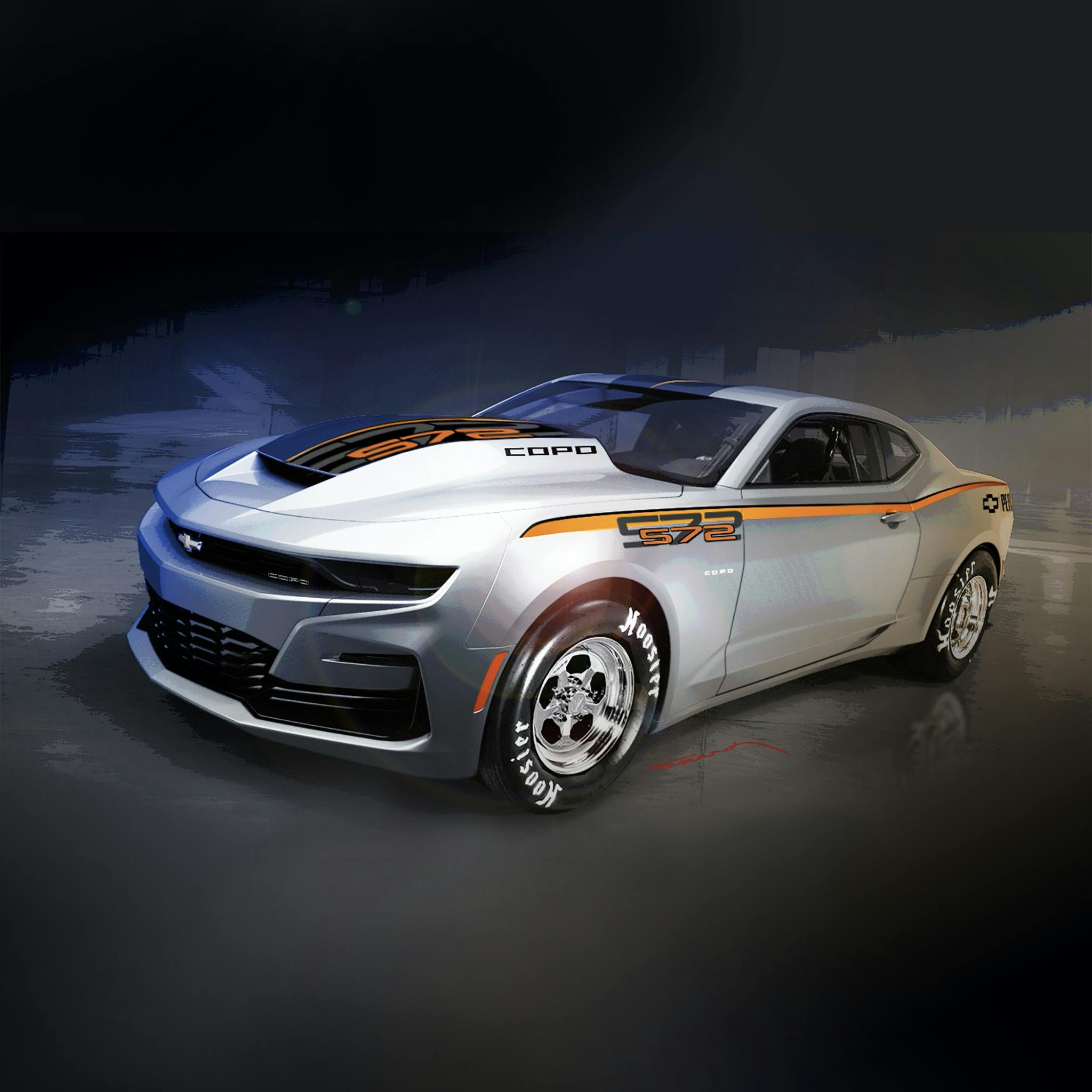Media | Articles
For the first time in 50 years, you can get a big-block Camaro directly from Chevy
For the first time in nearly 50 years, you can get a big-block Camaro straight from Chevrolet. After 10 years of small-blocks getting all the racing glory, Chevrolet is putting a fuel-injected big-block V-8 under the hood of its COPO Camaro. And with the impressive 427 already bringing big-block-like displacement, Chevrolet went bananas and dropped in its largest V-8: a tall-deck, 572-cubic-inch behemoth that packs coffee-can-sized 4.56-inch bores. Look out, Drag Pak and Cobra Jet!

There is a catch. Because it’s a COPO Camaro, this beast is not for street use and is meant for NHRA Stock and Super Stock eliminator racing. But you should know that by now. There is good news, though. Chevrolet had previously capped COPO production to 69 units per year back when the drag-strip-only variant made its debut in 2012. Continuing the pattern established in 2020, the previous lottery system put in place to score one of the limited COPO Camaros is gone. Ordering is still simply on a first-come-first-served basis, with Chevrolet putting no limit to the production.
If you prefer your COPO with a small-block powerplant, Chevrolet has you covered as well, with both a supercharged 350 and a naturally aspirated 427 V-8, each port fuel-injected, soldiering on for 2022. Both engines are conservatively rated at 580 and 470 hp, respectively.
Although there are no power numbers available for the 572, expect it to also be underrated. We do know that the iron-block, four-bolt-main engine uses aluminum heads from Edelbrock and a Holley Hi-Ram intake with an Aeromotive fuel system and 58-lb/hr injectors that match those on its 427 stablemate. The heads listed have just a 315-cc intake port, in line with the Performer RPM heads often used in performance street builds, but the 118-cc exhaust port doesn’t seem to match any currently available Edelbrock castings. Those modest port volumes suggest that racers will have some porting to do to reach the engine’s full potential, which should be outstanding. Current COPO racers have squeezed more than 800 hp from their naturally aspirated 427s. and the 572 packs a bigger bore with bigger valves. While the big-block might not rev quite as high as its small-block brethren, it should still be able to move considerably more air.

If you’ve got your sights set on a COPO 572 and don’t have the $105,000 that a 572 COPO will cost you, don’t worry. Chevy will be offering the fuel-injected 572 as a crate engine as well. If we had to guess, we’ll be seeing one on display at this year’s SEMA show. Until then, have fun benchracing.
Marketplace
Buy and sell classics with confidence















